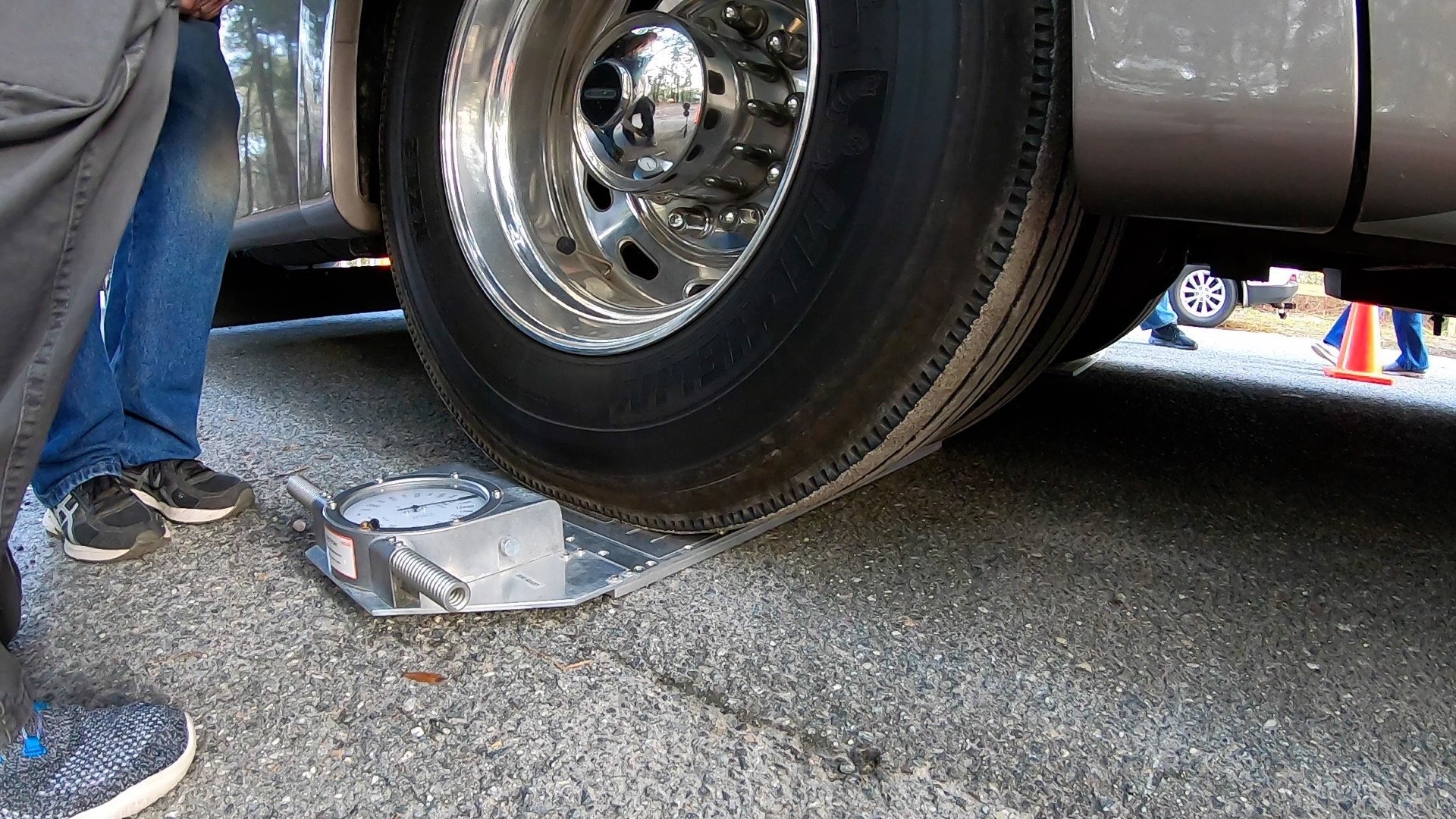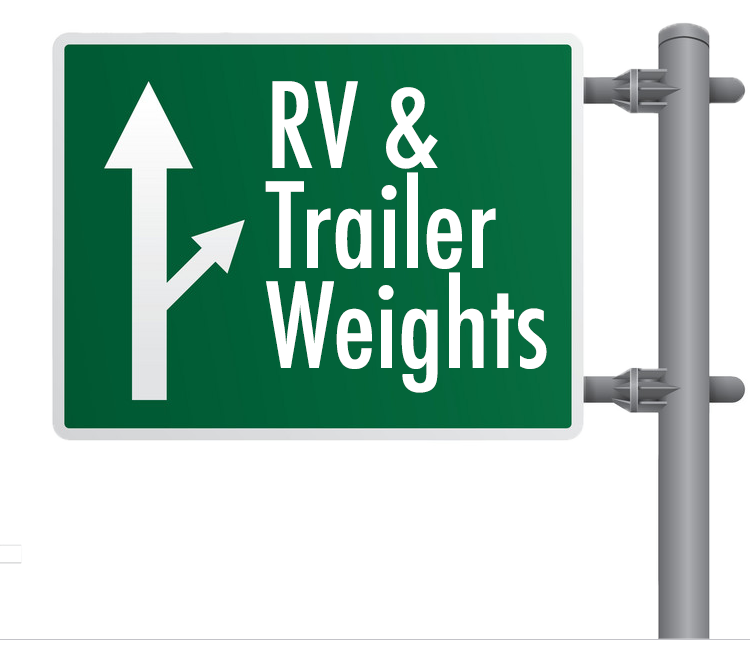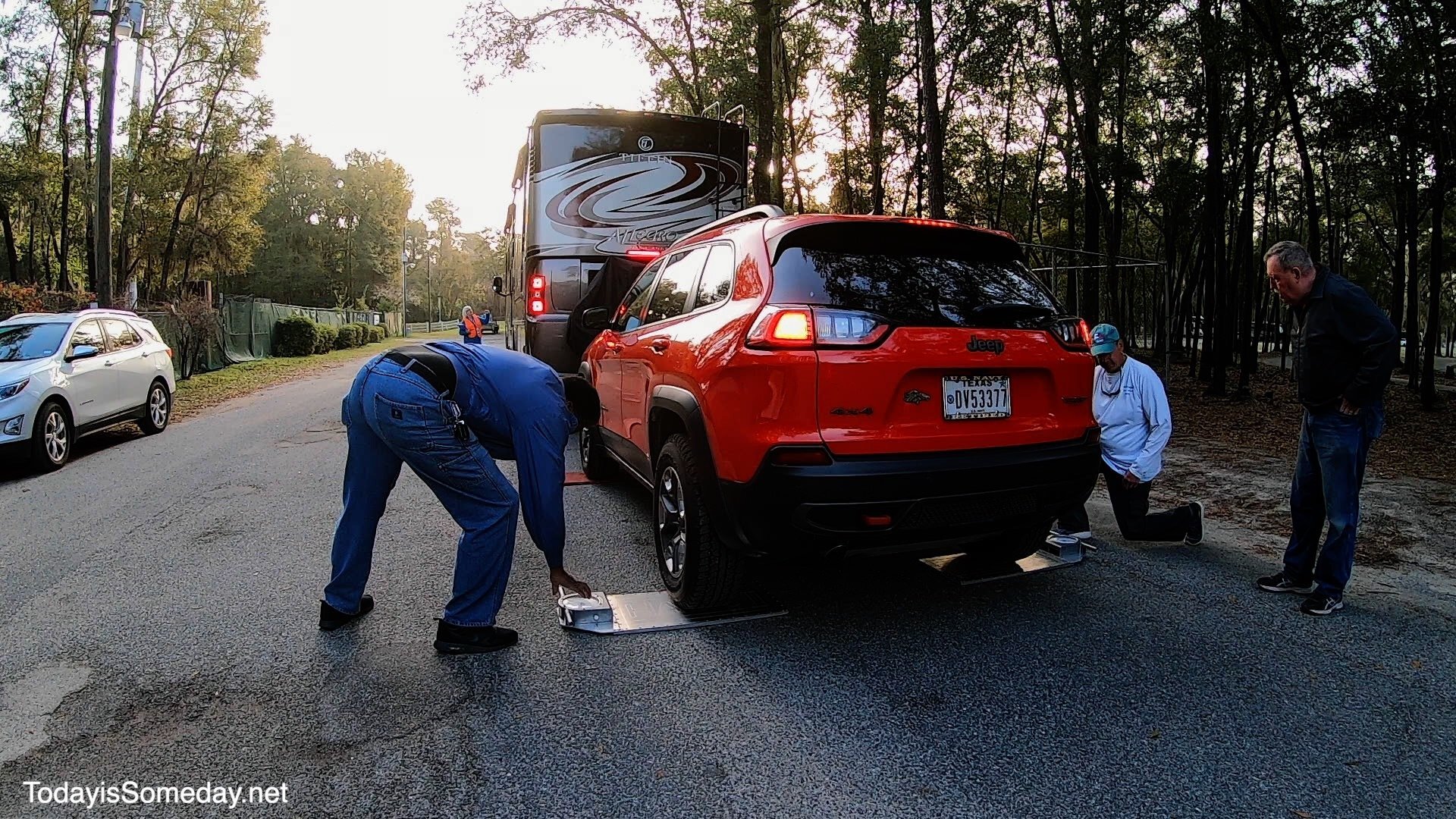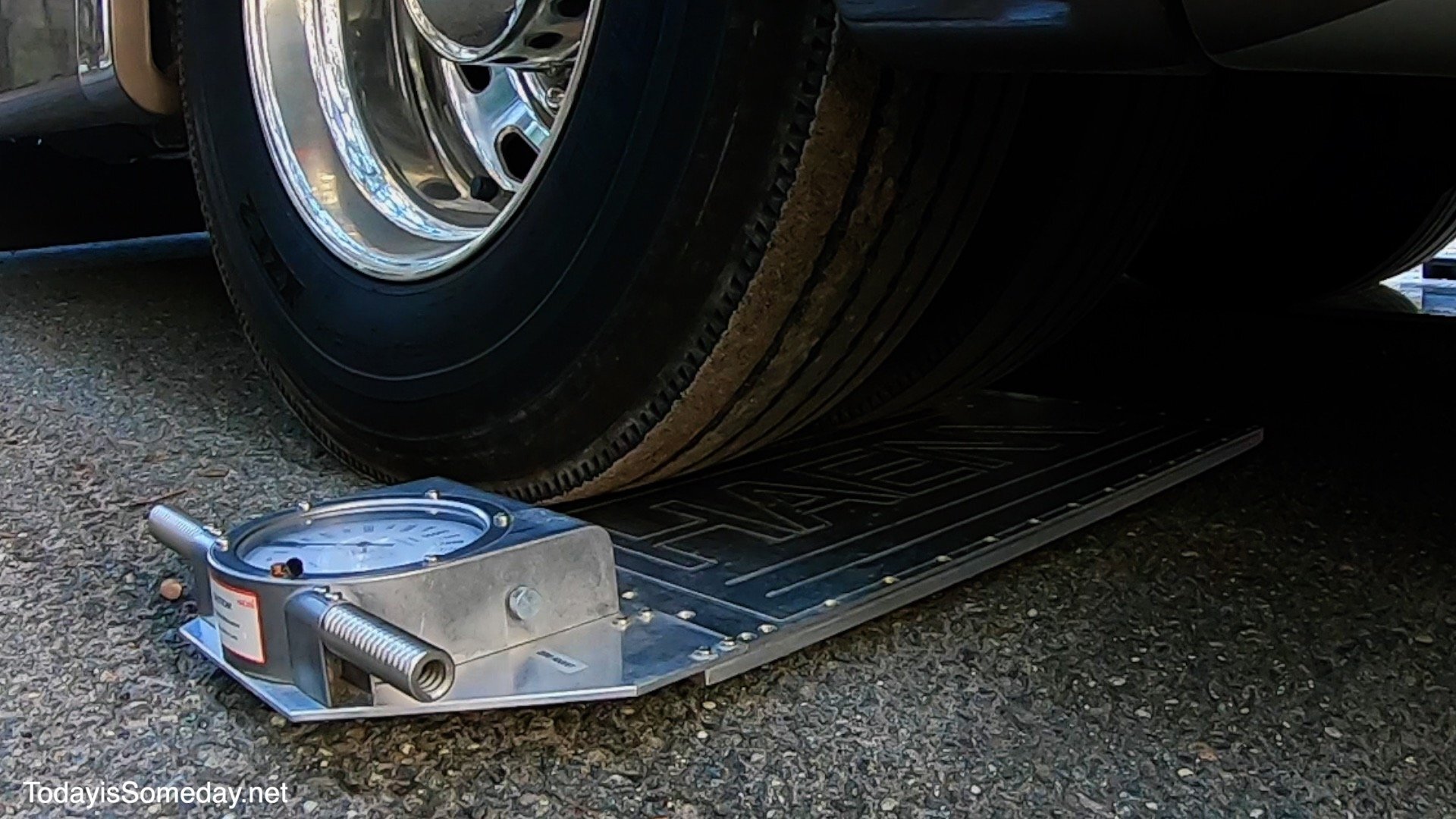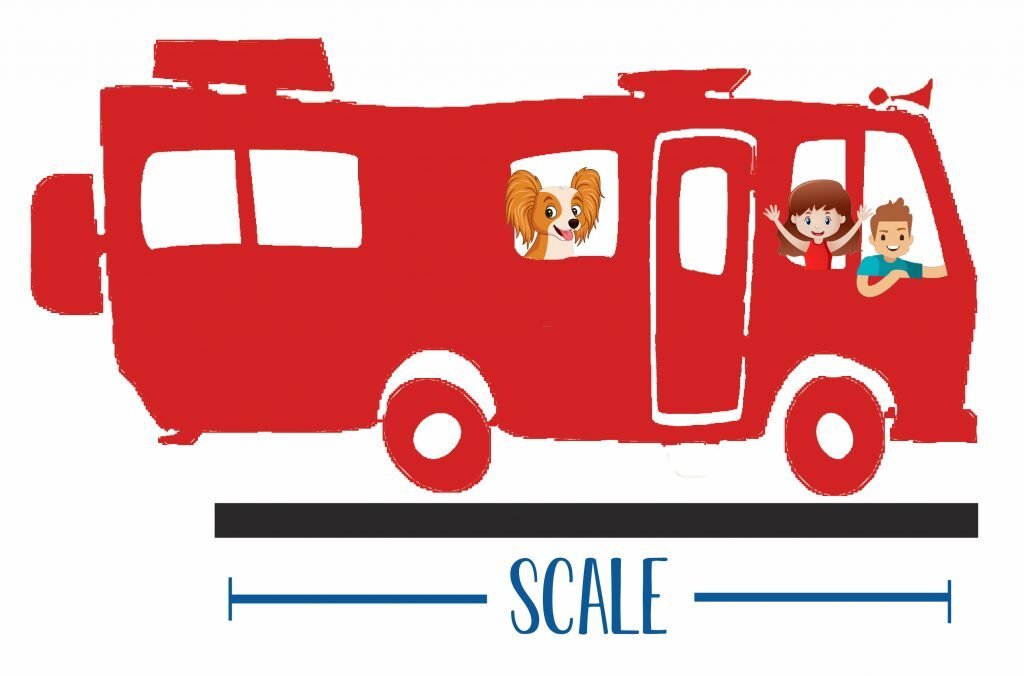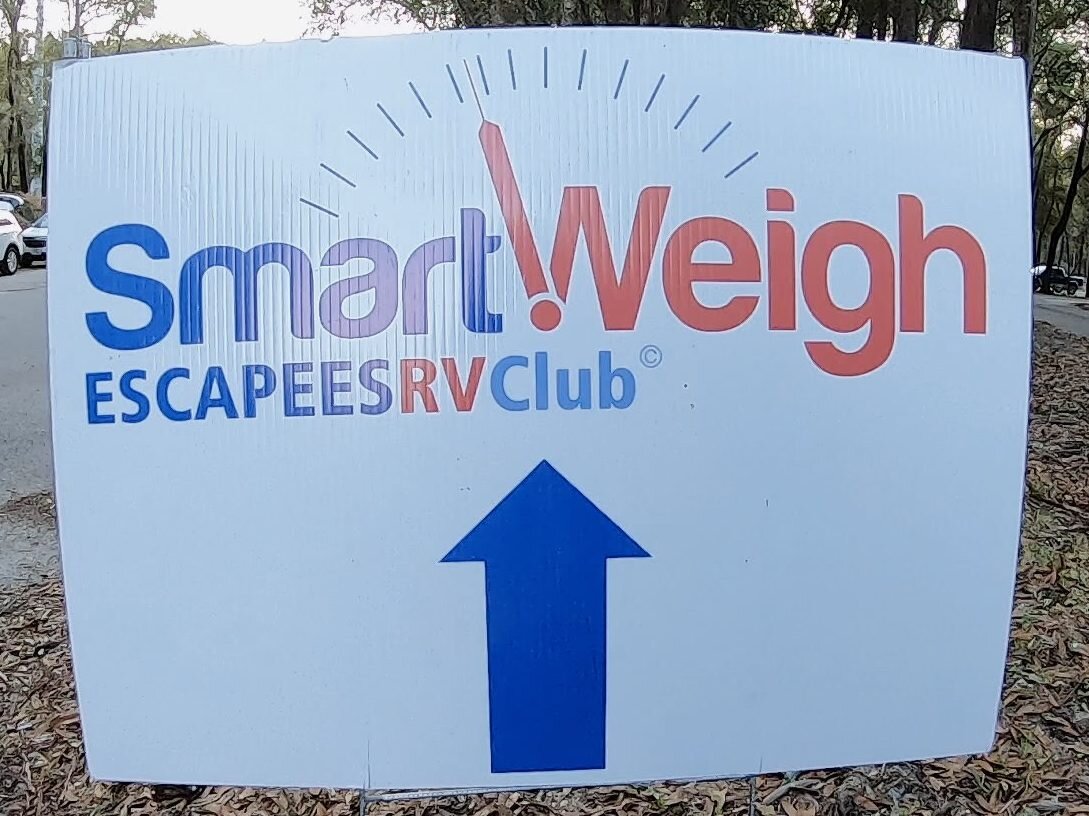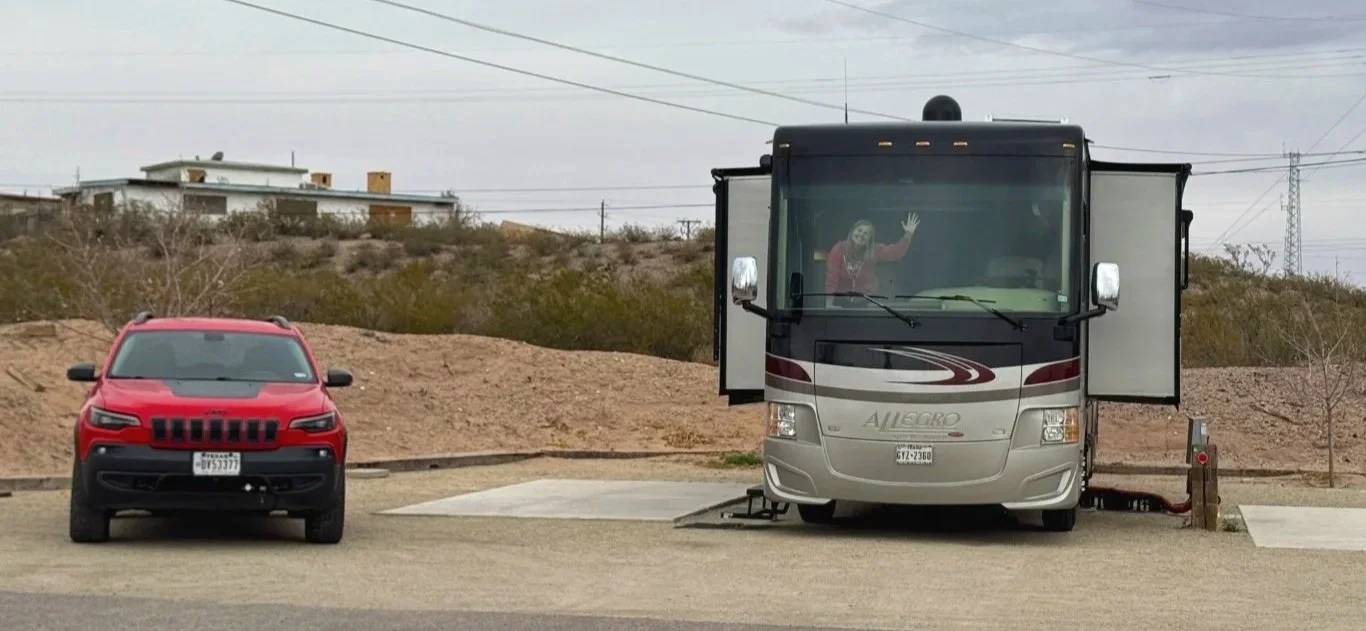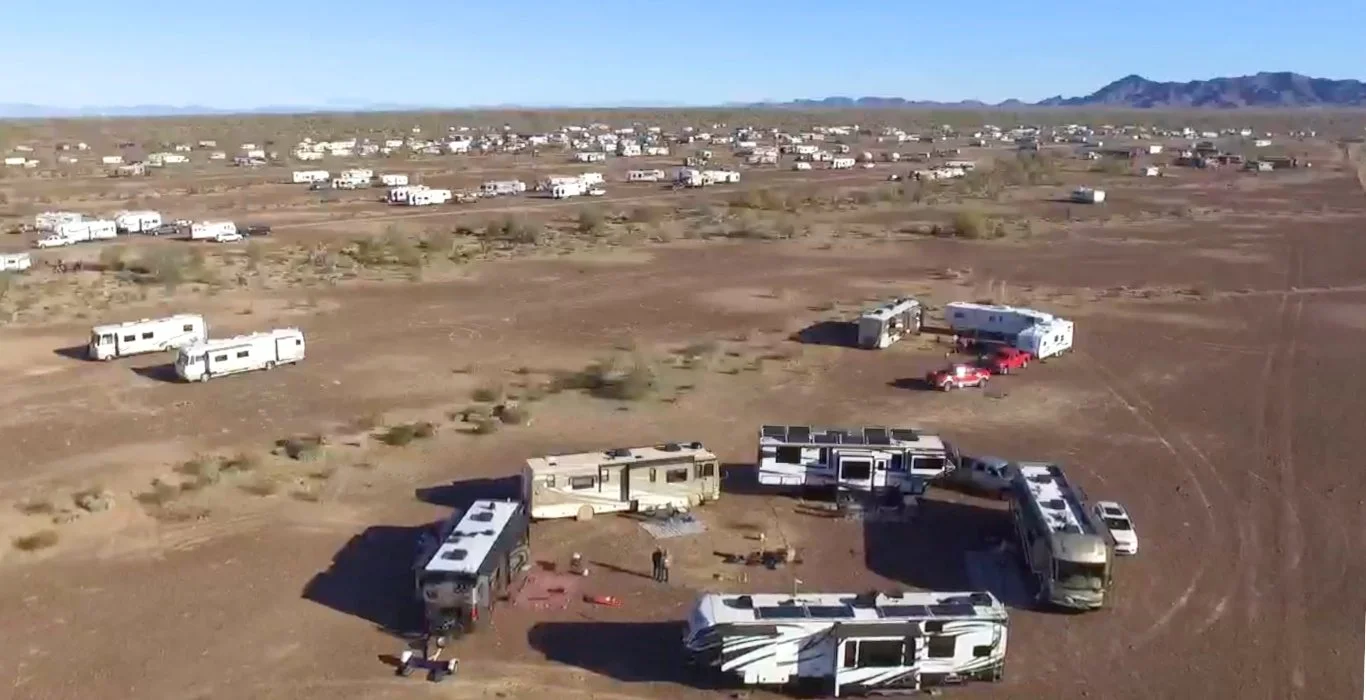4 Corner RV Weigh: The BEST Way To Stay Safe
Disclosure: The links below may be affiliate links that are at no additional cost to you. When you use our links, we may earn some extra beer money, but it won’t be enough for Phil’s ice cream habit or a batch of Stacy’s famous margaritas (recipe here).
When was the last time you weighed your RV? I hope you didn't just say never! Having your RV weighed is the number one thing you can do to keep your family safe while traveling in your RV. We recently completed a 4 corner RV weigh with our RV, and it was very eye-opening. So let's break down what you need to know about weighing your rig.
Why Weigh Your RV
Safety is the number one reason to periodically weigh your RV. Overloading your RV puts you and your passengers in harm's way because it increases your risk for an RV accident.
Tire Failure
An overloaded RV can lead to tire failure. If the tire is not inflated correctly to carry the heavy load, it may cause tires to heat up, uneven or faster than normal tread wear, and poor tire handling. Overloading your tire will shorten the life of your tire and put you at risk for a tire blowout.
Stopping Distance
Overloading your RV will increase your stopping distance. In an emergency, this is the last thing you want to happen.
Wear and Tear
Unnecessary wear and tear on your RV are caused by overloading your rig. Areas with the highest impact are suspension, springs, brakes, and tires. You do not want these parts to wear prematurely or to fail.
Repair Costs
Overloading your RV can lead to increased repair costs due to the premature aging of components. Transmissions overheat, and brakes fail or wear out sooner than they should when the RV carries more weight than ratings allow. This could cause an unexpected breakdown costing you even more money!
Unbalanced Load
Unevenly distributed cargo throughout the RV can lead to safety issues. Although your RV may be within the approved axle weight rating, your individual tires may exceed their limit.
For example, if your axle rating is 12,000 pounds and your actual axel weight is 11,800 pounds, you are under your approved axle weight rating. But if your left tire weighs 6,595 pounds and your right tire weighs 5,205 pounds with a maximum tire load of 6,175 pounds per tire, you are over the tire rating. The left tire will be at risk for failure because it is not rated to carry a heavy load.
Legal Responsibility
If your RV is over the GVWR (see below) allowed by the manufacturer, it could affect the outcome of an accident. If you are involved, your RV weight could be viewed as the contributing factor to the accident, even if you were not at fault. You may also be cited if your RV is overloaded and if you do not have the proper license for your RV's weight as required by your state.
What does It Mean?
Before we go any further, let's get some definitions out of the way.
GVWR
The gross vehicle weight rating is the maximum operating weight of a vehicle as specified by the manufacturer. This rating includes the vehicle's chassis, body, engine, engine fluids, fuel, accessories, driver, passengers, and cargo.
GAWR
The gross axle weight rating is the maximum distributed weight supported by an axle of a road vehicle. Typically, the gross axle weight rating is followed by either the letters FR or RR, which indicate the front or rear axles.
GCWR
The gross combined weight rating is the maximum allowable combined weight of the vehicle, the passengers and cargo in the tow vehicle, plus the mass of the trailer or towed vehicle. This includes all cargo in the towed vehicle or trailer.
NCC
The net carrying capacity is the total weight that an RV can carry, including cargo, passengers, water, and trailer tongue weight. The carrying capacity does not include the actual weight of the RV.
For more RV definitions, head to RV Terms for Newbies.
Matt from Adventurous Way explains RV weights below.
Different Types of RV Weights
There are two ways to determine if your RV needs a diet. You can weigh her on a scale that measures the weight of each axle or wheel position weights. Each has pros and cons, so let's break them down.
Axle
This type of scale will weigh all the tires on a single axle at once. The most common type of axle scale is the CAT scale. They can be found in 47 states and 7 Canadian provinces. These scales will provide axel weights for your RV and towed vehicle.
Pros
Convenient
Inexpensive
No appointment necessary
Cons
It does not provide individual tire weights
It can give a false safe weight if your load is not distributed evenly side to side
4 Corner RV Weigh
You can find this type of RV scale under two different names 4 corner RV weigh or wheel position weigh. This is the most accurate way to weigh your RV. It provides the exact weight each tire is carrying.
Pros
Obtaining the weight of each wheel position is the only way to calculate proper tire inflation accurately.
It will alert you if your tire is overloaded, even if you are within the GAWR and GVWR.
This is the recommended method of weighing RVs according to tire manufacturers, including Michelin and Goodyear.
Cons
Not as readily available
Must be scheduled ahead of time
More expensive
"We recommend weighing each axle end separately and using the heaviest end weight to determine the axle's cold inflation tire pressure. For control of your RV, make sure tire pressures are the same across an axle, while NEVER exceeding the maximum air pressure limit stamped on the wheels."
Load & Inflation Tables, MichelinRVTires.com
"Goodyear also recommends weighing each wheel position of your vehicle. Just because your vehicle meets the GVWR, it may still be overloaded on an axle."
Recreation Vehicle and Tire Guide, Goodyear, pg 6
Where to Weigh
When to Weigh
We recommend weighing your RV immediately after moving in! Whether you are full-time, part-time, sometimes, or anytime, it doesn't matter. Once you load up your rig with the appliances, food, water, fire pit, chairs, sheets, pillows, Gramma, Mom, Dad, teen, toddler, baby, and Fido, go straight to the scales to your first RV park. It is the only way to keep those loved ones safe and having fun.
If a wheel position scale is not in your area, don't wait. Head to the local truck stop and start with an axle weight. And remember, when it comes to weighing your RV, it is not a one and done! You will need to weigh your RV routinely over its life, including after significant upgrades.
our cat scale weigh
The first time we weighed Ruby was at a CAT scale in August of 2018. Thankfully she did not need to go on a diet! Here were her results:
Steer Axle 9,220 lbs (Front)
Drive Axle 19,020 lbs (Rear)
Gross wt 28,240 lbs
Ruby's Max weights (Tiffin 33AA 35 ft motorhome)
GAWR Front 12,000 lbs
GAWR Rear 20,000 lbs
GVWR 32,000 lbs
We did not have water on board, so we added 750 pounds to the rear axle (8.3 lbs x 90 gals). We were still under our maximum weight even with the added water weight.
After weighing Ruby, Phil adjusted our tire PSI from a 110 max cold PSI to 90 PSI on the front tires and 100 PSI on the rear tires.
our 4 Corner RV Weigh
As we left the RVillage rally, we were first in line for the Escapees SmartWeigh. We were very eager to see the results compared to the CAT scale results.
R Front 4,500 lbs
L Front 4,800 lbs
R Rear 10,600 lbs
L Rear 9,100 lbs
Height 12' 10" (BONUS!! SmartWeigh also measures the highest point of your RV)
Ruby's Micheline Tire Ratings
Max front tire rating 6,175 lbs
Max rear tire rating 5,675 lbs x 2 tires for a total of 11,350 lbs
After receiving these exact weights, Phil adjusted the tire PSI again. Hopefully, this will give us a smoother ride as we head down the road.
Meet Stacy! Stacy and her husband, Phil, are a wanderlust couple who have been roaming the great USA for an epic 7 years! They ditched the daily grind to embark on thrilling adventures and inspire fellow dreamers to chase their travel dreams. Curious about how they do it? Check out their awesome YouTube channel, Today is Someday, where they're spilling all the secrets to living a life on the move. Get ready to pack your bags and join them on this incredible journey.
Today is Someday, ALL RIGHTS RESERVED, 2020

